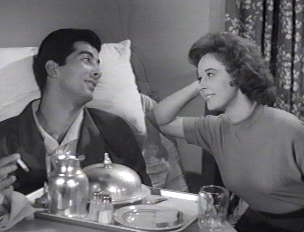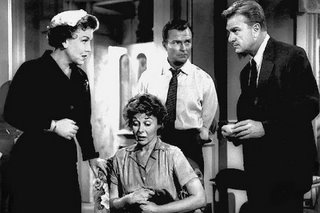 United 93 (2006)
United 93 (2006)
Director: Paul Greengrass
Before it even hit theatres, United 93 was drawing strong reactions from moviegoers. Some stood up in theatres that played a trailer for the film and yelled “too soon!” Others attacked the film, sight unseen, as a possible incitement to renewed hatred of Arabs and almost certainly exploitative. I was one of those people. The deep, probably permanent trauma the events of 9/11 inflicted on the psyches of Americans who witnessed it on the ground and on TV set this film apart from other real-life docudramas, such as Wake Island (1942), that served almost as newsreels for the general public before televisions were in every household. Revisiting that day of devastation is not something most Americans are willing to do.
I already knew the work of Paul Greengrass. I watched Bloody Sunday (2002), his verite look at the 1972 British massacre of civil rights protesters in Northern Ireland, reduce an audience member to inconsolable weeping for half an hour. It was with great trepidation, therefore, that I sat down in the mostly empty theatre to watch his recreation of 9/11, with special focus on the United flight that ended in a Pennsylvania field.
The film starts by focusing on the terrorists who hijacked United 93. We hear prayers as the plain, white credits flash on a black screen. We see the man who is reading from the Koran sitting on a bed in a hotel room. His comrade is in the bathroom shaving his body. Why? Is it an Islamic ritual? Why becomes clear later. As they leave the room, one sticks a plastic knife into his belt.
We shift to the innocent events of what would become the end of innocence for a naive nation. People are standing in ticketing lines at the Newark airport. People are reporting for work at the FAA. The United 93 flight crew chitchat and get the airplane ready for takeoff.
Events build slowly. American Airlines 11 from Boston starts doing some strange things on radar. The air traffic controller at Boston Center repeatedly tries to hail the plane and  watches as it changes direction and altitude, almost colliding with another commercial jet during one tense moment. Possible hijacking? One controller says they haven't had one in 30 years. That sounds like the FAA has really been doing its job, but we soon see that maybe it was just dumb luck for most of those years. The new head of the FAA's National Air Traffic Control Center in Herndon, Virginia, Ben Sliney (playing himself), follows the progress routinely, then with growing alarm as it appears that other planes have been hijacked.
watches as it changes direction and altitude, almost colliding with another commercial jet during one tense moment. Possible hijacking? One controller says they haven't had one in 30 years. That sounds like the FAA has really been doing its job, but we soon see that maybe it was just dumb luck for most of those years. The new head of the FAA's National Air Traffic Control Center in Herndon, Virginia, Ben Sliney (playing himself), follows the progress routinely, then with growing alarm as it appears that other planes have been hijacked.
A military exercise is to take place off of the eastern seaboard. When this real-world situation comes to their attention, Colonel Marr (Gregg Henry) requests permission to scramble his fighter planes from their practice exercise to track the rogue aircraft.
Then AA11 hits one of the World Trade Towers. We learn this first when the plane drops off radar. Then we see it on the TV at Herndon. Word is that it is a small craft. No one's really sure. Controllers in New York, however, stare in disbelief as a second plane hits the other tower in a spectacular jet fuel blaze. When news of this second strike reaches Military Command, Colonel Marr desperately tries to reach the President to get permission to shoot down any hijacked commercial plane. He learns that Air Force One has taken off and can't be reached. The whereabouts of the Vice President, who also could have given the go-ahead, are unknown.
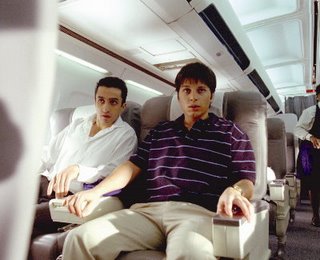 Meanwhile, United 93 finally gets clearance to take off after a 30-minute delay. As the breakfast service gets underway, the four anxious hijackers prepare for their last act. The shaved hijacker takes his carry-on bag, goes into the lavatory, and assembles a bomb that he then tapes to his torso. Finally, the hijackers act. They rush the cockpit, stab and kill the pilot and co-pilot, and take over. The scuffle is heard on radio at Cleveland Center, which tracks the flight helplessly as the passengers on board slowly learn of the other hijackings and realize that their hijackers are on a suicide mission that will kill them all.
Meanwhile, United 93 finally gets clearance to take off after a 30-minute delay. As the breakfast service gets underway, the four anxious hijackers prepare for their last act. The shaved hijacker takes his carry-on bag, goes into the lavatory, and assembles a bomb that he then tapes to his torso. Finally, the hijackers act. They rush the cockpit, stab and kill the pilot and co-pilot, and take over. The scuffle is heard on radio at Cleveland Center, which tracks the flight helplessly as the passengers on board slowly learn of the other hijackings and realize that their hijackers are on a suicide mission that will kill them all.
For the first 20 or so minutes, I was clenched inside. I knew what was to come. I also recognized the airport scene as something I've lived dozens of times in my life. A wash of 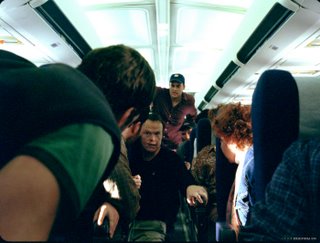 fear visited me in much the same way it did after the events of 9/11 began to unfold. But this miraculously well-paced film drew me in and got me involved in these real events, some shown pretty much as they occurred, others a work of imagination that, nonetheless, were based on the best-available evidence (phone calls from the passengers of UA 93 to their loved ones) and shrewd common sense. It seems entirely plausible that fear of antagonizing the hijackers would give way to a last, desperate fight for survival, as the passengers hatch a plan to try to take back the plane.
fear visited me in much the same way it did after the events of 9/11 began to unfold. But this miraculously well-paced film drew me in and got me involved in these real events, some shown pretty much as they occurred, others a work of imagination that, nonetheless, were based on the best-available evidence (phone calls from the passengers of UA 93 to their loved ones) and shrewd common sense. It seems entirely plausible that fear of antagonizing the hijackers would give way to a last, desperate fight for survival, as the passengers hatch a plan to try to take back the plane.
Greengrass was trodding on sacred ground by attempting to make a film of the 9/11 tragedy. Something inside the British producer/director/writer is drawn to atrocities, and that thing must be compassion. He reminds me of the subject of the excellent 2001 documentary War Photographer, James Nachtwey, who immerses himself in the suffering of his subjects to bear witness to their plight. Greengrass doesn't take the physical risks that Nachtwey does, yet he performs an enormously valuable service to humanity by questioning the official line (as he did in Bloody Sunday and in Omagh, about the 1998 bombing of the Northern Irish city of Omagh and its stalled investigation) and giving a human face to the "little people" who are damaged by politics and ideology in the course of just living their lives.
Each of his films has marked a step forward for Greengrass, as he has dropped some of the anger to allow all of the humanity to shine through. In United 93, Greengrass has produced a genuine masterpiece--sensitive to a still-traumatized public, reportorial when he could have been sensational, and sympathetic with the very real confusion such an unthinkable event causes its players. Although I couldn't have imagined it before seeing it, this film is a gift to a shattered nation, an important tool in the long process of healing. It gets my vote as the best picture of the year. l

 Dancing at Lughnasa (1998)
Dancing at Lughnasa (1998)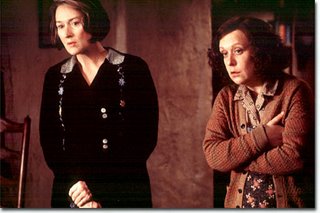
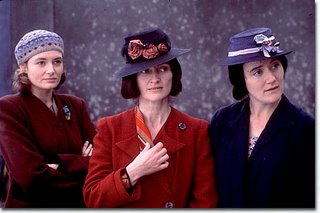
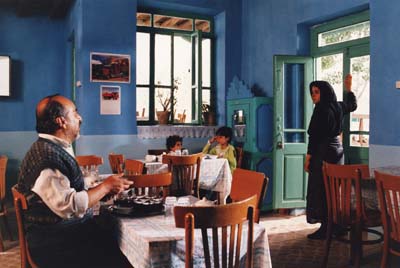 Border Café (Café Transit, 2005)
Border Café (Café Transit, 2005)





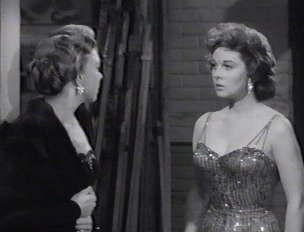 I'll Cry Tomorrow (1955)
I'll Cry Tomorrow (1955)
